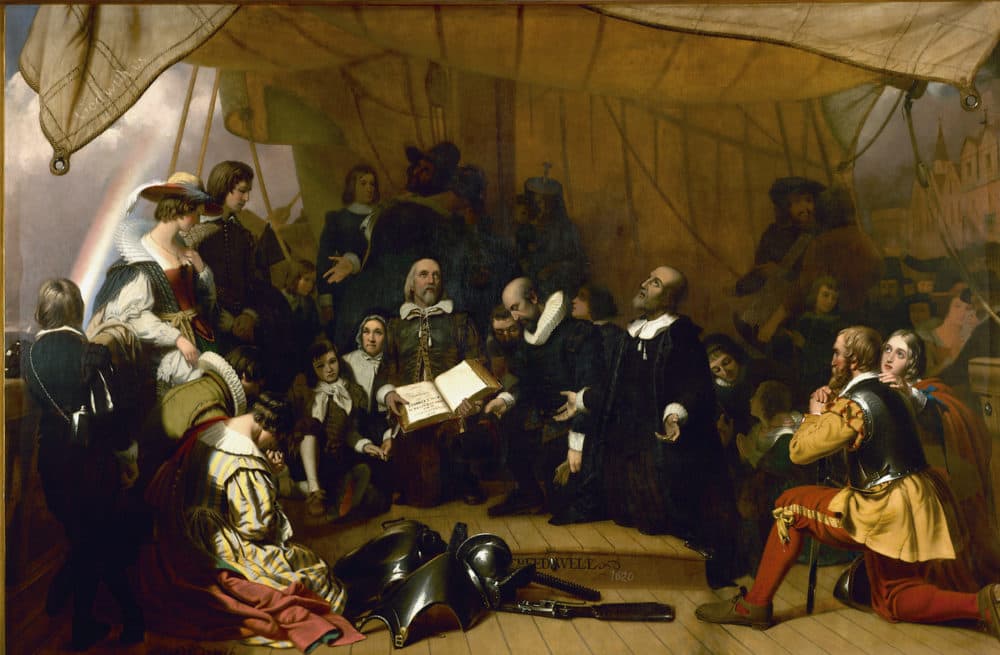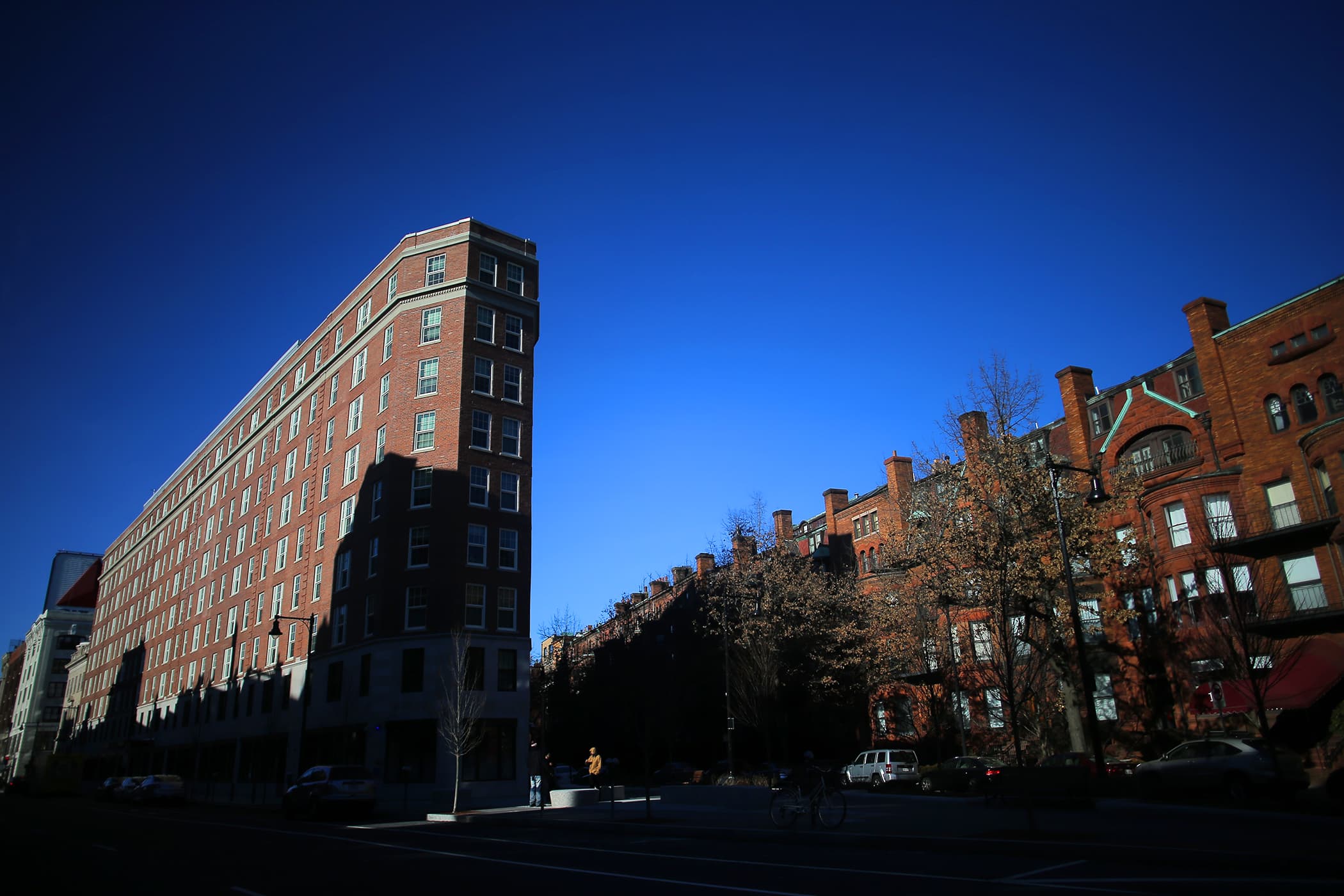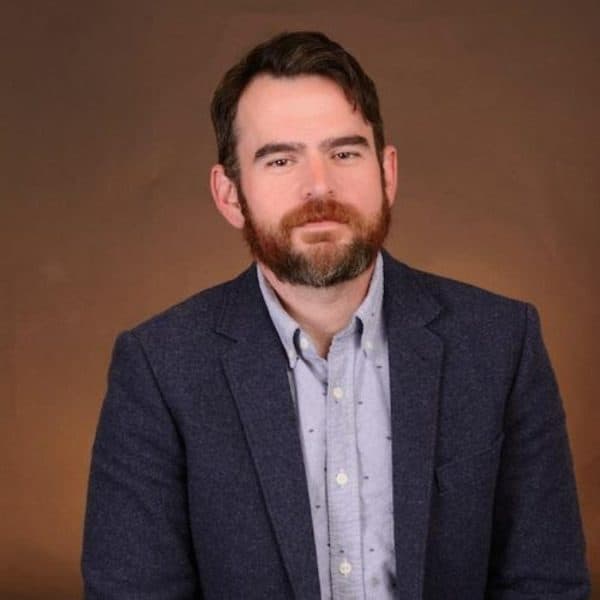Advertisement
Commentary
Why BU Should Rename Myles Standish Hall

Massachusetts is deciding whether to redesign the state motto and seal, an image that critics say depicts the violence of European colonization of the Americas. The seal features a disembodied arm, sword in hand, floating above a Native American.
It is widely believed to be Myles Standish’s arm swinging that sword, a notion that should particularly resonate with the Boston University community. (Editor's Note: BU owns WBUR's broadcast license.)
Built in 1925 and purchased by BU in 1949, Myles Standish Hall not only serves as the eastern gateway to the Charles River Campus, but it also pays tribute to Plymouth Colony. According to campus historian Daryl Healea, the building’s triangular design was meant to resemble the bow of a ship, an homage to the 300th anniversary of the Mayflower’s landing in 1620. Standish, hired as the Pilgrim’s military leader, was aboard that ship.
He went on to commit terrible acts of violence against the Massachusett Tribe, whose villages once stretched from present-day Boxford to Mattapoisett. A year ago, I asked Thomas Green, vice president of the Massachusett Tribe at Ponkapoag, if members of the tribe were interested in working together to change the building's name. Now the Tribal Council is calling for the residence hall to be renamed to honor one of Standish’s victims.

In 1623, Standish led a small group of Plymouth settlers in what has come to be known as The Massacre at Wessagusset. Standish and company lured members of the Neponset Band of the Massachusett Tribe into a small building and attacked them, stabbing to death several of the men and hanging another, a young man reported to have been only 18.
Standish’s primary target was a man named Wituwamat, a prominent member of the Neponset Band and a well-known warrior. Standish suspected Wituwamat was the architect of a vast conspiracy against Plymouth Colony, though scholars now suggest that there was no actual evidence of such a plot.
Regardless, Standish beheaded Wituwamat and prominently displayed the gruesome trophy as a warning to other Natives. According to one historian, “Wituwamat’s head remained on Plymouth’s meetinghouse-fort for at least six months in 1623 and probably much longer, publicly displayed for people to observe the deterioration of its skin and flesh until only the skull remained to terrify.”
Advertisement
Though Henry Wadsworth Longfellow’s 1858 romantic poem “The Courtship of Miles Standish” posthumously made him a national hero, Standish’s actions at Wessagusset were immediately controversial. John Robinson, pastor to the Pilgrims, wrote a letter to Plymouth governor William Bradford criticizing the massacre and expressing concerns over Standish’s violent disposition toward Natives. Neither behavior represented the values of a group that considered themselves to be living saints.
Centuries later, Standish’s name looms large. Though he was prone to violent outbursts when insulted about his diminutive stature, a 14-foot statue in his likeness stands atop an enormous granite monument in Duxbury’s Myles Standish Monument State Reservation. Just south of Plymouth, Myles Standish State Forest covers nearly 12,500 acres and is a popular outdoor recreation site year-round. Significantly, Standish has no connection to BU nor the Back Bay area. The university simply inherited the name when it purchased the short-lived hotel.
With the support of the Massachusett Tribe and members of the BU community, I am petitioning university leaders to change the name from Myles Standish Hall to Wituwamat Memorial Hall. The call comes as activists around the country have urged businesses to remove derogatory names and images associated with Native Americans. Last week, Squaw Valley Ski Resort in California was renamed Palisades Tahoe. Years of Indigenous-led protests culminated in name changes for the Washington Football Team and the Cleveland Guardians. To the chagrin of nativist Republican congressman Steve King, Land O' Lakes dairy company removed the image of a Native American woman from their packaging.
Founded in 1947 as both a museum and a memorial to the colonists at Plymouth, Plimouth Plantation was last year renamed Plimouth Patuxet Museums to more fully recognize the Wampanoag peoples whose homelands the Pilgrims claimed as their own.
BU, under President Robert A. Brown, has already recognized Juneteenth and Indigenous Peoples’ Day as university holidays. Previously, Brown appointed a committee to consider changing the university’s mascot because it is linked to "Gone with the Wind," a romantic depiction of the Confederacy’s defense of slavery in the Civil War. Acting on these issues is, according to Brown, “part of our commitment to make Boston University the diverse, equitable, and inclusive community that best embodies our values.”
The acknowledgment of Indigenous Peoples’ Day is a promising first step to building relationships between the university and Indigenous communities, but BU must do more than create internal committees to investigate issues involving Native peoples in the future. Native students, staff, and faculty are drastically underrepresented.
The enrollment of African American/Black, Asian, Hispanic, multiracial and international students has increased over the last five years, while the number of American Indian/Alaska Native (AIAN) and Native Hawaiian/Pacific Islander (NHPI) students has significantly decreased, especially at the undergraduate level. Faculty diversity follows a similar trend, according to demographic data published by the university. Simply put, Indigenous peoples are the only racially or ethnically minoritized group not growing at BU.
It is imperative, then, that the university partner with the Massachusett Tribe at Ponkapoag and honor their wishes by making Wituwamat Memorial Hall a reality. As the first building many visitors to campus encounter, WMH would be a powerful symbol of the university’s commitment to continuously evolve to reflect its core values.
